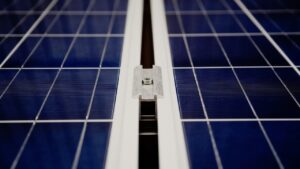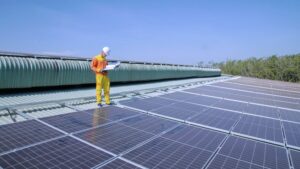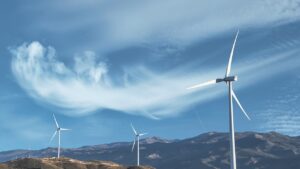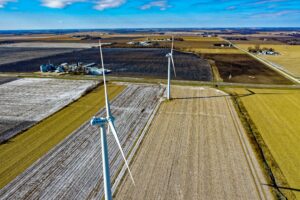Manufacturing is an energy-intensive process that accounts for over 25% of global greenhouse gas emissions. With rising costs and tightening regulations around carbon footprints, manufacturers are under pressure to operate more efficiently while minimizing environmental impact. Artificial intelligence presents a solution through intelligent production scheduling to optimize energy use and lowering emissions. So, in this article, we will deeper at how does AI help in the manufacturing process and scope 3 in manufacturing.
The Role of Scheduling in Efficiency and Lower Scope 3 Emissions
Production scheduling involves planning and sequencing manufacturing processes to achieve certain objectives. Furthermore, traditional scheduling has focused on metrics like machine utilization, throughput, and on-time delivery. However, scheduling also directly affects energy consumption and carbon footprint.
By intelligently timing energy-intensive processes, AI scheduling can maximize efficiency and sustainability. Furthermore, it analyzes huge amounts of data on production workflows, energy demand, emissions output, and other variables to create optimal dynamic schedules.
AI scheduling can shift high-energy processes like metal casting, welding, and painting to lower-emission periods. It can also sequence production across facilities to avoid demand spikes. Additionally, it can adapt in real-time to use more renewable energy as it becomes available.
Challenges With Manual Scheduling
Most manufacturers still use legacy scheduling methods like simple first-in-first-out rules, fixed sequencing, and also manual planning by human schedulers. However, these approaches face growing limitations:
- They fail to account for fluctuations in energy supply, demand, and pricing over a day. Furthermore, manual methods use static demand forecasts and cannot adapt to real-time changes.
- They lack the flexibility to adapt to changing conditions and optimize on the fly. So, humans cannot rerun complex scheduling scenarios quickly the way AI can.
- They are unable to effectively schedule production across multiple plants and geographies. Moreover, humans struggle to coordinate more than a few sites at once.
- They do not consider sustainability factors like emissions and renewable energy use. Moreover, traditional scheduling objective functions often ignore carbon footprint.
This leads to suboptimal energy usage and avoidable emissions from using dirty power during peaks. Manual methods also cannot handle the complexity of scheduling across hundreds of machines and thousands of jobs.
AI Scheduling Optimizes Energy Use & Reduces Scope 3 Emissions
AI-based scheduling is designed to overcome these challenges. It can analyze a myriad of data streams in real-time and continuously optimize production for maximum efficiency.
Key inputs used by AI scheduling algorithms include:
- Energy cost data – real-time and forecasted pricing from utilities and energy markets. Furthermore, it enables shifting demand to lower cost periods. AI can also factor in complex time-of-use and peak pricing schemes.
- Carbon intensity data – emissions output per kWh for the local grid over time. It allows minimizing usage when the grid is dirtiest. Additionally, AI can predict future emissions based on planned generation mixes.
- Production workflows – machine speeds, processing times, changeover needs, and other manufacturing constraints. Furthermore, AI can model extremely complex production constraints and sequences.
- Renewable forecasts – projected solar/wind availability on-site and for the grid. It allows aligning production with a clean energy supply. AI can also generate probabilistic forecasts from weather data.
- Demand signals – upcoming production requests and operational needs. Furthermore, AI can understand interdependent demand across facilities and lines.
The AI scheduler crunches this data to create a plan that balances production goals, energy costs, sustainability targets, and asset utilization. Moreover, the system can simultaneously coordinate decisions across hundreds of machines and multiple facilities for global optimization. So, this answers the much-asked question of how does AI help in the manufacturing process.
Strategies Used by AI Scheduling For Scope 3 in Manufacturing
AI scheduling applies various strategies to optimize energy consumption and scope 3 in manufacturing:
Shift Demand to Off-Peak Hours
By sequencing batches and other intensive processes for overnight and weekend shifts, consumption is moved to lower-cost, lower-emission periods. Furthermore, AI can optimize shift schedules based on predicted demand profiles, energy pricing, and carbon intensity forecasts.
Match Production to Renewable Energy
Scheduling aligns production windows to times of high solar/wind availability to minimize reliance on dirty grid power. Moreover, AI enables precise renewable matching despite variability and uncertainty in generation.
Sequence Across Sites
Multi-facility scheduling prevents simultaneous demand spikes and reduces peak charges. AI coordinates schedules holistically across plants while adhering to local constraints.
Adapt to Real-Time Data
Continuously optimized based on live data streams to leverage the cleanest power available. AI automatically adjusts schedules to remain optimal as conditions change.
Optimize Battery Usage
It Coordinates battery charging and discharging with production and renewable levels. AI can also optimize based on battery efficiency curves and lifespan considerations.
Strategic Load Shedding
Temporarily reducing production during peak demand to avoid energy price spikes and stabilize the grid. Furthermore, AI can determine optimal load-shedding strategies.
AI-Scheduling For Scope 3 Emissions: Barriers to Overcome
While promising, AI adoption faces hurdles like data integration, change management, and demonstrating ROI:
Data infrastructure – Manufacturers must aggregate siloed data from various sources into a unified analytics platform for AI scheduling. So, this requires investments in IoT, industrial connectivity, and data engineering.
Model configuration – Algorithms must be tailored to handle each manufacturer’s unique constraints. This is around machines, workflows, and objectives. Moreover, domain expertise is needed to train models properly.
Organizational alignment – Adoption requires aligning production teams on new data-driven, automated scheduling approaches. So, this change management process can slow rollout.
Proof of value – The benefits of AI scheduling must be demonstrated through pilots and measured with concrete ROI metrics. As a result, this facilitates the justification of upfront AI investments.
Solutions must also become more configurable and plug-and-play for mainstream adoption beyond early adopters.
The Future with AI
Intelligent scheduling unlocks game-changing efficiency and emissions gains. Early manufacturing AI use cases like optimizing energy consumption and matching supply with renewable generation represent the tip of the iceberg.
As the technology matures, manufacturers can embed automation deeper into planning and control processes. AI agents can also continuously monitor equipment, adapt to disruptions, align with dynamic inputs, and make real-time decisions. The entire value chains can also be integrated to enable holistic sustainability gains and lower scope 3 emissions.
Already, leading-edge manufacturers are leveraging AI to reduce energy expenses and carbon footprints. Through strategies like off-peak sequencing and renewable matching, production scheduling can play a major role in decarbonization and efficiency. As more companies follow suit, AI scheduling promises to significantly contribute to global climate and sustainability goals like scope 3 emission reduction.
Join the Scope 3 Emission Reduction Summit to Drive Progress
To learn more about how AI scheduling and other technologies can cut manufacturing emissions, join the 2nd Edition Scope 3 Emission Reduction Summit on April 18-19, 2024 in Berlin, Germany.
The summit brings together experts across manufacturing, energy, and technology. They will discuss AI-driven solutions for optimizing Scope 3 emissions across complex value chains. With in-depth case studies and insights into the latest innovations, it provides a unique opportunity to build strategies and partnerships for leveraging intelligent scheduling and other emerging capabilities to reach sustainability targets.
Discover real-world AI use cases, implementation roadmaps, benefits, and lessons learned at the intersection of manufacturing, supply chain, technology, and the environment. Help lead your company and industry into a more efficient, low-emissions future. Join the conversation at the Emission Reduction Summit today!





